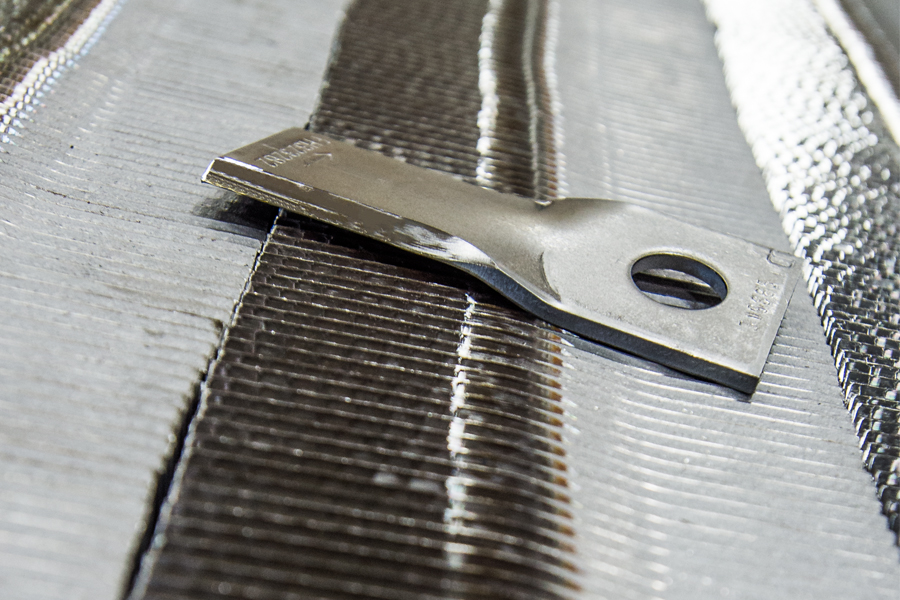Disc and Drum Mower Blades
When in the process of operating most types of agricultural harvesting equipment, the safety of the operator, as well as bystanders, must be of utmost importance. This is especially true for disc and drum agricultural mowing equipment.
Disc and drum mowers cut the crop in preparation for harvest utilizing the “blade impact” method — similar to how a lawn mower blade cuts the grass on your lawn. There are a number of rotating “discs” mounted along a cutter bar, and each one of these discs has two small blades attached to each end.
Needless to say, these discs spin at a high rate of speed in order to cut heavy agricultural crops, and sometimes these blades come in contact with debris in the field such as stones, rocks, fence posts, etc. The purpose of this study was to determine the optimum material properties associated with these cutting blades so that in Kondex’s blade manufacturing process, acceptable wear properties are achieved while still maintaining maximum blade ductility and toughness.
Generally speaking, the harder a material is, the less it should wear. Conversely, the harder a material is, the more brittle it becomes. Therefore, there is a balancing act that must be achieved in order to optimize the wear properties and at the same time, assure the safety of the disc mower blade.

The Procedure
Modern material testing practices offer several standardized tests to measure these material properties. These include Rockwell hardness testing, rubber wheel/dry sand wear testing, and Charpy impact testing. Using these three testing methods, we set out to discover the “sweet spot” of disc mower knife material properties.
We began the study by salt-quench hardening a series of progressively harder samples of blade material, starting at about 43 Rockwell C and ending at 51 Rockwell C. Samples of each hardness blade material were then run in the rubber wheel/dry sand wear tester to compare hardness vs. wear. Results showed a slight improvement in wearability as the hardness of the samples increased but to a lesser degree than we would have expected.
Next, we set out to compare Rockwell hardness vs. Charpy impact strength. As we would have expected, hardness and impact strength were generally inversely proportional. For example, as hardness increased, toughness decreased. But to our surprise, the data showed that when the hardness levels rise above approximately 47 Rockwell C, there is a dramatic decrease in impact toughness readings.
The Conclusion
Disc and drum mower blades with a higher hardness are likely to last a bit longer in the field, but to a much greater importance, there appears to be a maximum hardness level at which the blade material exhibits a dramatic decrease in toughness. Kondex’s disc and drum mower blades are manufactured to a maximum hardness of 47 Rockwell C.
For further information on this study, “Paper Number 055002, Disc and Drum Mower Blade Safety: Testing Practices and Procedures” by Neal J. Stoffel, Kondex Corporation, can be viewed or purchased on the American Society of Agricultural and Biological Engineers website.




